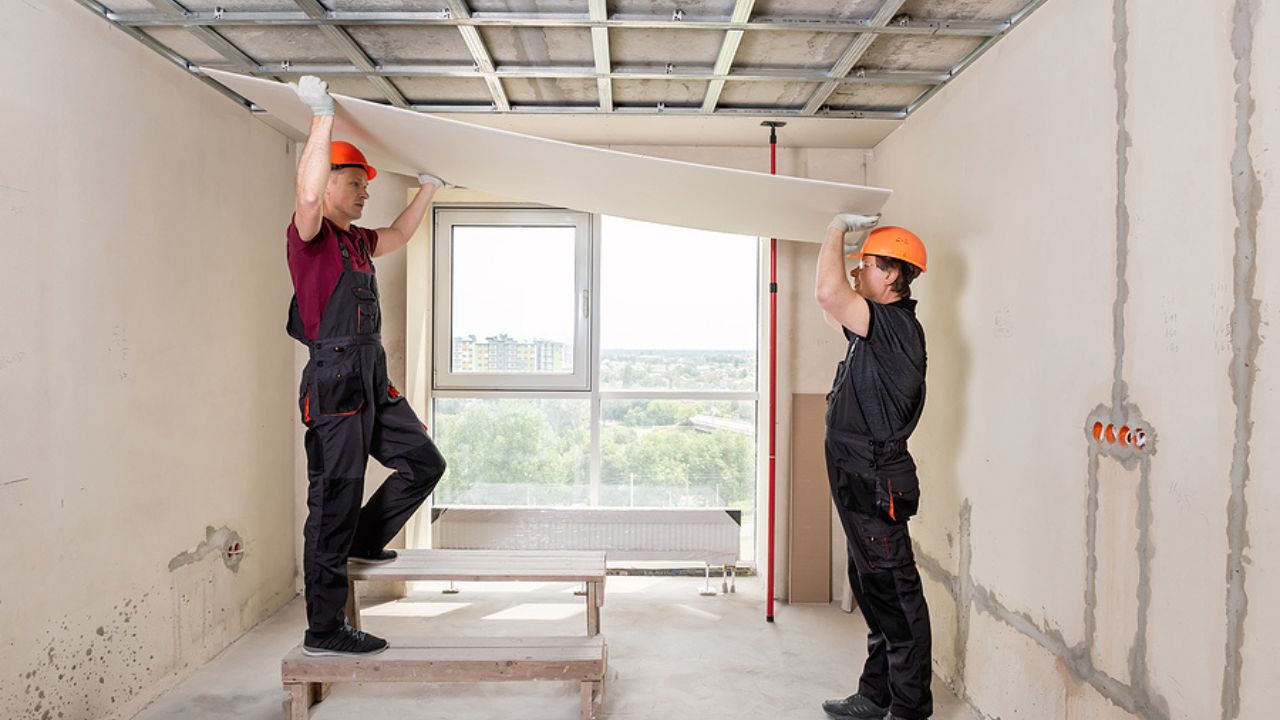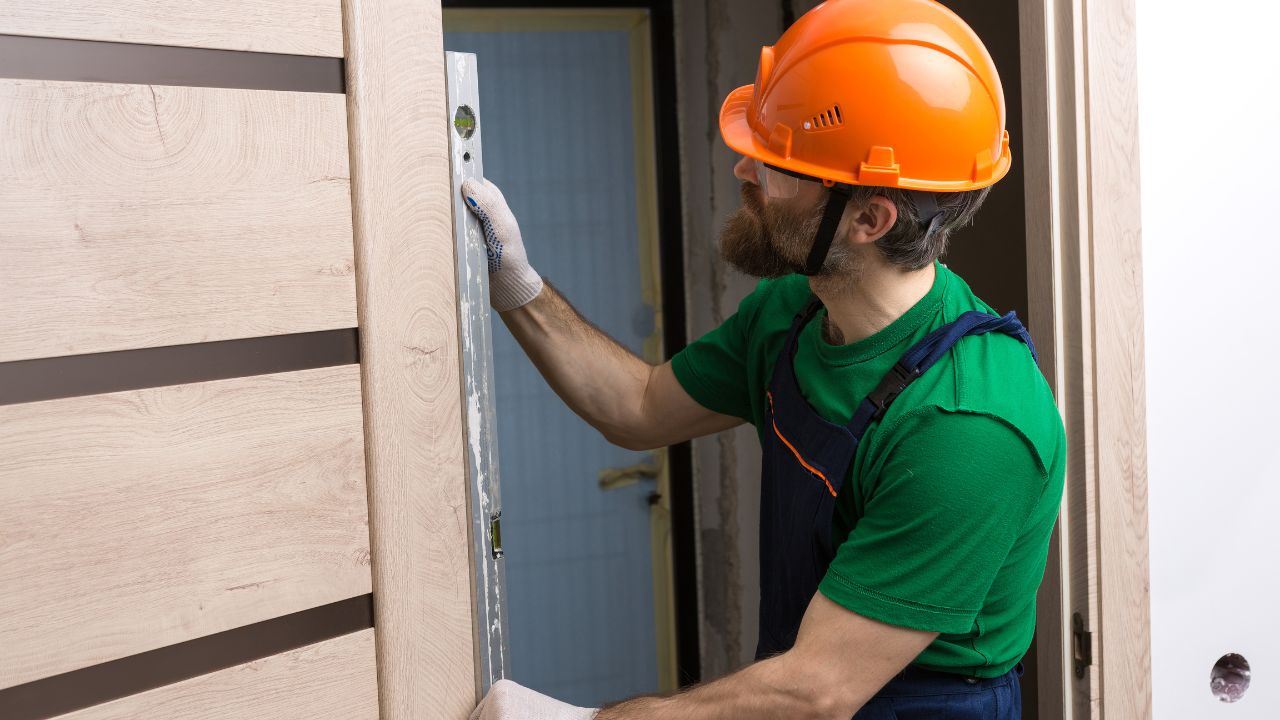- Homepage
- Mechanical
Cost to Install HVAC System with Ductwork Per Square Foot
Leading provider of mechanical estimating services
Installing an HVAC system with ductwork typically costs between $39,715 and $128,310, averaging $8 to $15 per square foot. This comprehensive estimate includes the HVAC unit, ductwork, installation, and necessary permits. Costs can vary based on the system size, efficiency, complexity, and local labor rates. High-efficiency systems or those with advanced features like zoning and smart controls can raise the overall cost. Additional expenses might arise from upgrading electrical systems, making structural modifications, or adding insulation. Investing in a quality HVAC system ensures optimal performance, energy efficiency, and long-term savings, enhancing the comfort and value of your property. For accurate per-square-foot budgeting, estimate ductwork installation costs using our specialized tool.
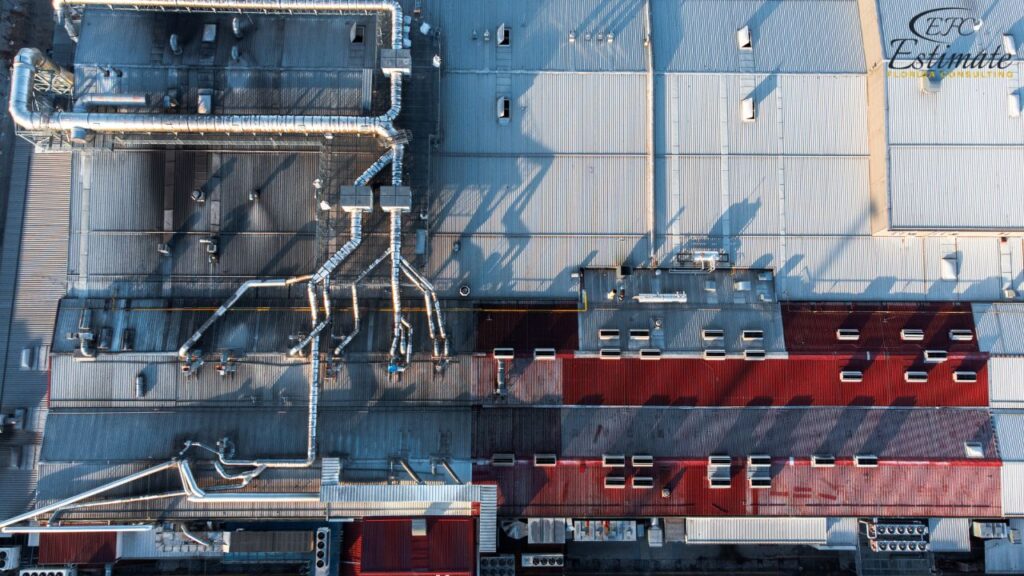
Cost Breakdown for HVAC Installation with Ductwork
Equipment Costs
Here’s a breakdown of the estimated equipment costs for different HVAC systems:
HVAC System Type | Cost per Sq Ft (in dollars) | Total Cost for 2,000 Sq Ft (in dollars) |
Central Air Conditioning | $5.20 – $10.40 | $10,400 – $20,800 |
Heat Pump Systems | $6.50 – $13.00 | $13,000 – $26,000 |
Furnace and AC Split Systems | $6.50 – $11.70 | $13,000 – $23,400 |
Ductless Mini-Split Systems | $7.80 – $15.60 | $15,600 – $31,200 |
The equipment cost is a significant part of the total expense. Choosing the right system involves balancing efficiency, capacity, and budget considerations. Each type of system offers unique benefits, so it’s important to select one that meets the specific needs of your building.
Want to Start Your Project with the Best Contractors?
Let’s Take Your Projects to the Next Level.
& What's you will get:
- Connecting You to Top Local Contractors
- Professional Consulting, Contractors Near You
- From Expert Advice to Local Contractor Connections
Contact Now
Let's discuss with a cup of coffe
Ductwork Costs
Ductwork installation costs can vary based on the type and complexity of the system. Here’s an estimate of the ductwork costs:
Ductwork Type | Cost per Linear Ft (in dollars) | Total Cost for 300 Linear Ft (in dollars) |
Flexible Ductwork | $4.55 – $7.80 | $1,365 – $2,340 |
Rigid Ductwork | $6.50 – $11.70 | $1,950 – $3,510 |
Semi-Rigid Ductwork | $5.85 – $10.40 | $1,755 – $3,120 |
Proper ductwork installation is crucial for efficient system performance. Choosing the right type of ductwork and ensuring it is installed correctly can prevent issues like air leaks, poor airflow, and increased energy consumption.
Labor Costs
Labor costs can vary based on the complexity and size of the installation. Here’s an estimate of the labor costs:
Installation Complexity | Labor Cost per Sq Ft (in dollars) | Total Labor Cost for 2,000 Sq Ft (in dollars) |
Simple | $4.55 – $7.80 | $9,100 – $15,600 |
Moderate | $7.80 – $11.70 | $15,600 – $23,400 |
Complex | $11.70 – $15.60 | $23,400 – $31,200 |

Labor costs are influenced by the system’s complexity and the skill level required. Simple installations with fewer specialized requirements will cost less in labor compared to more complex installations involving advanced techniques and equipment.
Additional Costs
Additional costs can include permits, system design, and any necessary modifications to the building structure. Here’s an estimate of these additional costs:
Additional Component | Estimated Cost (in dollars) |
Permits | $1,300 – $3,900 |
System Design | $7,800 – $15,600 |
Structural Modifications | $7,800 – $39,000 |
Miscellaneous Supplies | $1,950 – $3,900 |
These additional costs can add up, so it’s essential to factor them into your overall budget. Proper system design and the right modifications are crucial for ensuring the performance and longevity of the HVAC system. Including these costs in the initial budget helps in avoiding surprises and ensuring the project stays on track.
Factors Influencing the Cost of HVAC Installation with Ductwork
Type of HVAC System
The type of HVAC system chosen plays a significant role in the overall cost of the project. Here are some common options:
- Central Air Conditioning: Central air systems are common in residential and commercial buildings. They typically consist of an outdoor compressor unit and an indoor air handler connected by ductwork. These systems are efficient and provide consistent cooling throughout the building but come at a higher installation cost.
- Heat Pump Systems: Heat pumps provide both heating and cooling by transferring heat between indoor and outdoor units. They are energy-efficient and can reduce utility bills but have a higher upfront cost. Heat pump systems are especially beneficial in moderate climates.
- Furnace and AC Split Systems: These systems use a furnace for heating and an air conditioner for cooling. They are commonly used in areas with extreme seasonal temperature variations. While they are effective and reliable, they require separate components for heating and cooling, increasing installation complexity and cost.
- Ductless Mini-Split Systems: Ductless systems are ideal for buildings without existing ductwork or for adding climate control to specific areas. They consist of an outdoor unit and one or more indoor units connected by refrigerant lines.
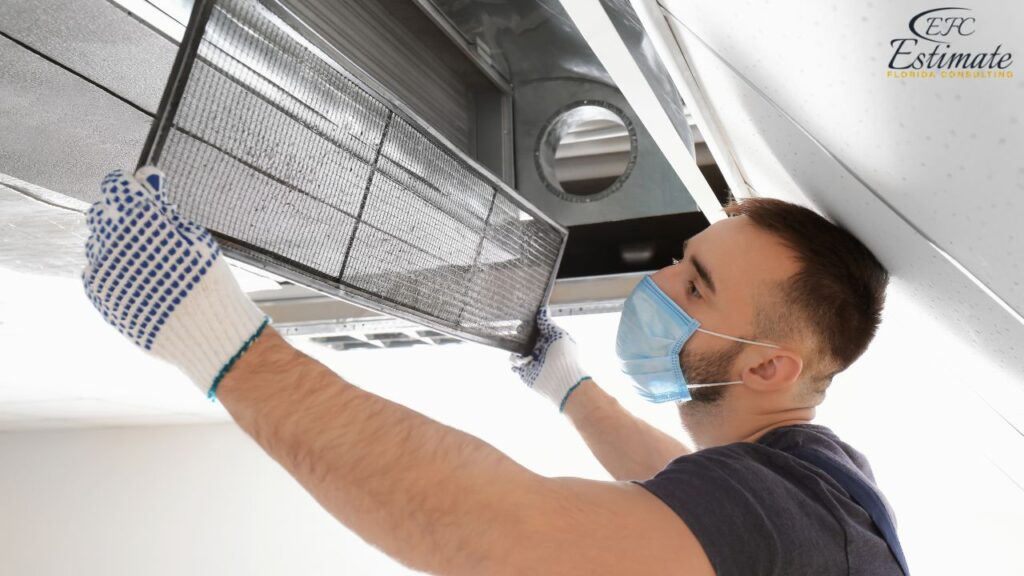
Ductless systems are flexible and energy-efficient but can be more expensive per unit compared to central systems.
Building Size and Layout
The size and layout of the building significantly impact the cost of HVAC installation. Larger buildings require more extensive ductwork, larger capacity units, and more labor, increasing the overall expense. The complexity of the layout, including the number of floors, zones, and obstacles, also influences labor and material costs. Buildings with multiple floors or unique architectural features may require specialized ductwork designs to ensure optimal airflow and climate control.
Ductwork Installation
The size and layout of the building significantly impact the cost of HVAC installation. Larger buildings require more extensive ductwork, larger capacity units, and more labor, increasing the overall expense. The complexity of the layout, including the number of floors, zones, and obstacles, also influences labor and material costs. Buildings with multiple floors or unique architectural features may require specialized ductwork designs to ensure optimal airflow and climate control.
Energy Efficiency Requirements
Energy-efficient HVAC systems can reduce long-term operating costs but often come with a higher upfront price. High-efficiency units have advanced features like variable speed motors, smart thermostats, and enhanced filtration systems. Many building owners opt for systems that meet or exceed local energy codes and standards, such as ENERGY STAR certification. Investing in energy-efficient systems can also provide eligibility for rebates, tax credits, and other incentives, further offsetting the initial cost.
Additional Features and Controls
Additional features and advanced controls can increase the cost of HVAC installation. Smart thermostats, zoning systems, and integration with building management systems (BMS) offer enhanced control and monitoring capabilities. These features improve energy efficiency and comfort but come with additional costs for equipment and installation. Advanced controls can also provide remote access, data analytics, and automated maintenance alerts, contributing to improved system performance and reduced downtime.
Geographic Location
Labor and material costs vary by region. Areas with a higher cost of living or greater demand for HVAC services may see higher overall costs. Additionally, local climate conditions can influence the choice of HVAC systems and their associated costs, with some regions requiring more robust or specialized equipment. Geographic location also affects shipping and logistics costs for equipment and materials, impacting the total project budget.
Get High-Quality 3D Rendering Today!
Transform your space with stunning 3D rendering that blends style, comfort, and functionality.
We Specialize in Both Residential and Commercial 3D Rendering Projects.
- Luxury Villas
- Apartment Complexes
- Condominiums
- Schools
- Office Buildings
- Shopping Malls
- Hospitals
- Hotels & Resorts
Choosing the Right HVAC Contractor
Selecting a reputable HVAC contractor is crucial to the success of your installation project. Look for contractors with positive reviews, proper licensing, and adequate insurance coverage. Obtain multiple quotes and compare the scope of work, materials, and warranties offered. A trustworthy contractor will provide a detailed written estimate and be transparent about costs and timelines. Ensuring that your contractor has a proven track record can prevent potential issues and ensure a smooth installation process. For accurate estimates and professional advice, Estimate Florida Consulting offers expert consultation and cost estimation services. Working with an experienced contractor ensures that the installation is performed correctly, adhering to all safety and regulatory standards, and optimizing the performance and lifespan of your HVAC system.
Energy Efficiency Considerations
Investing in energy-efficient HVAC systems can lead to significant long-term savings on energy bills. High-efficiency units may have a higher upfront cost but can reduce operating costs over the system’s lifespan. Additionally, energy-efficient systems can qualify for tax credits, rebates, and incentives, further reducing the overall cost. When selecting an HVAC system, consider the SEER (Seasonal Energy Efficiency Ratio) rating for cooling efficiency and the AFUE (Annual Fuel Utilization Efficiency) rating for heating efficiency. High-efficiency systems not only reduce energy consumption but also contribute to environmental sustainability by lowering greenhouse gas emissions. Implementing energy-efficient practices and technologies can enhance the overall value and appeal of your property, making it more attractive to tenants and customers.
Maintenance and Operating Costs
Ongoing maintenance and operating costs are important factors to consider when budgeting for an HVAC system. Regular maintenance, such as filter changes, inspections, and tune-ups, is essential to ensure optimal performance and longevity. Energy-efficient systems may have lower operating costs, but it’s important to account for potential repair and replacement expenses over time. A well-maintained HVAC system can provide reliable performance and help avoid costly breakdowns and emergency repairs. Establishing a routine maintenance schedule and working with a reliable service provider can extend the lifespan of your system and ensure it operates at peak efficiency. Additionally, predictive maintenance technologies can help identify potential issues before they become major problems, reducing downtime and repair costs.
Environmental Impact
Choosing environmentally friendly HVAC systems can reduce the carbon footprint of your property. Consider systems that use eco-friendly refrigerants, have high energy efficiency ratings, and are manufactured by companies with sustainable practices. Reducing energy consumption not only lowers operating costs but also contributes to environmental sustainability. Additionally, implementing energy-saving practices, such as regular maintenance and using programmable thermostats, can further reduce the environmental impact of your HVAC system.

ustainable HVAC systems can also enhance indoor air quality, creating a healthier and more comfortable environment for occupants. Promoting environmental responsibility in your property’s operations can improve your company’s reputation and align with corporate social responsibility goals.
Benefits of Proper HVAC Installation
A properly installed HVAC system can provide numerous benefits, including improved indoor air quality, enhanced comfort, and increased energy efficiency. Ensuring that your HVAC system is installed correctly can prevent issues such as uneven heating or cooling, excessive noise, and frequent breakdowns. Proper installation also maximizes the system’s lifespan, providing long-term value and reliability. Investing in professional installation services from Estimate Florida Consulting can ensure that your HVAC system operates at peak performance. Additionally, a well-installed HVAC system can enhance the overall aesthetic of the property, integrating seamlessly with the architectural design and minimizing visual and auditory disruptions.
Potential for Insurance Coverage
In some cases, your property insurance policy may cover part or all of the cost of an HVAC replacement, particularly if the damage is due to a covered peril, such as a storm or fire. It’s important to review your insurance policy and discuss coverage options with your insurance provider. Filing a claim for HVAC replacement can help offset the cost, making the project more affordable. Keep detailed records of inspections, estimates, and repairs to support your insurance claim. Additionally, understanding the claims process and working with a contractor experienced in handling insurance claims can streamline the process and ensure you receive the coverage you’re entitled to. Proper documentation and proactive communication with your insurance provider can expedite the claims process and reduce the financial burden of unexpected repairs.
Cost-Saving Tips
Choose Cost-Effective Materials
Selecting HVAC materials and components that balance cost, durability, and efficiency can help you save money. While high-end systems may offer advanced features, cost-effective alternatives can provide reliable performance at a lower price point. Consider the long-term benefits and total cost of ownership when selecting materials.
Opting for modular systems can also provide flexibility and scalability, allowing for future expansions or upgrades without significant additional costs.

Schedule Off-Season Installation
HVAC contractors are typically busiest during peak seasons (summer and winter). Scheduling your HVAC installation during the off-season can sometimes result in lower labor costs due to decreased demand. Off-season scheduling can also lead to shorter wait times for your project to start, as contractors have more availability during these periods. Planning your project during less busy times can also provide opportunities for negotiating better rates or taking advantage of seasonal promotions and discounts offered by contractors.
Obtain Multiple Quotes
Getting multiple quotes from reputable HVAC contractors can help you find the best price for your project. Make sure to compare the scope of work, materials, and warranties offered by each contractor. Obtaining detailed, written estimates from several contractors allows you to make an informed decision and negotiate better terms. Additionally, reading reviews and checking references can ensure you select a contractor with a track record of quality work. Gathering multiple quotes also provides leverage for negotiating better terms and securing the best value for your investment.
Consider Long-Term Savings
Investing in higher-quality materials or energy-efficient HVAC options can result in long-term savings on maintenance and energy bills. For example, systems with higher SEER ratings can provide greater energy efficiency, reducing operational costs. Considering the total cost of ownership, including potential savings on energy and maintenance, can help you make a more cost-effective choice. Evaluating the payback period and return on investment for high-efficiency systems can also provide a clear understanding of the long-term financial benefits.
90% More Chances to Win Mechanical Bids with
Our Estimate!
Do Some of the Work Yourself
If you have the necessary skills and safety equipment, consider doing some of the preparatory work yourself, such as clearing the installation area or performing basic maintenance tasks. This can reduce labor costs, although it is essential to ensure that any DIY work meets safety and quality standards. Consulting with your contractor about what tasks you can handle can provide clarity on how much you can save without compromising the project’s quality and safety. Additionally, engaging in some of the preparatory work can provide a deeper understanding of the installation process and foster better communication with the contractor.
Conclusion
Installing an HVAC system with ductwork is a significant investment that requires careful planning and budgeting. By understanding the various costs involved and the factors that influence these costs, homeowners and business owners can make informed decisions and ensure their HVAC project is completed successfully. Investing in quality equipment and skilled labor ensures a reliable and energy-efficient HVAC system that will provide comfort and air quality for years to come. Properly planning and budgeting for your HVAC installation can help avoid unexpected expenses and ensure the project is completed on time and within budget. Making well-informed choices about equipment, contractors, and energy efficiency can lead to a successful HVAC project that enhances the value and functionality of your property. For precise and detailed cost estimates, consider utilizing the professional services of Estimate Florida Consulting. Our team of experts is dedicated to providing accurate and comprehensive estimates, ensuring that your HVAC installation project is a success from start to finish.
FAQs
The cost for installing an HVAC system with ductwork typically ranges from $8 to $15 per square foot. This estimate includes the HVAC unit, ductwork, installation, and necessary permits.
Costs vary based on the system’s size, efficiency, complexity, and local labor rates. High-efficiency systems or those with advanced features like smart controls and zoning can increase the total cost. Additional expenses may arise from upgrading electrical systems, structural modifications, or adding insulation.
The type of HVAC system chosen significantly influences the overall cost:
- Central Air Conditioning: Efficient and provides consistent cooling throughout the building.
- Heat Pump Systems: Provide both heating and cooling by transferring heat between indoor and outdoor units.
- Furnace and AC Split Systems: Use a furnace for heating and an air conditioner for cooling.
- Ductless Mini-Split Systems: Ideal for buildings without existing ductwork or for adding climate control to specific areas.
The size and layout of the building significantly impact the cost of HVAC installation. Larger buildings require more extensive ductwork, larger capacity units, and more labor, increasing the overall expense. The complexity of the layout, including the number of floors, zones, and obstacles, also influences labor and material costs.
Existing ductwork may need to be inspected and upgraded or replaced if it is not compatible with the new HVAC system. The condition and accessibility of existing ducts can affect installation costs.
Energy-efficient HVAC systems can reduce long-term operating costs but often come with a higher upfront price. High-efficiency units have advanced features like variable speed motors, smart thermostats, and enhanced filtration systems. They may qualify for rebates, tax credits, and other incentives.
Additional features like smart thermostats, zoning systems, and integration with building management systems (BMS) can increase costs but offer enhanced control, energy efficiency, and comfort. Advanced controls provide remote access, data analytics, and automated maintenance alerts.
Comprehensive Trade-Specific Estimates
At Estimate Florida Consulting, we offer detailed cost estimates across all major trades, ensuring no part of your project is overlooked. From the foundation to the finishing touches, our trade-specific estimates provide you with a complete and accurate breakdown of costs for any type of construction project.
Our Simple Process to Get Your Estimate
Upload Plans
Submit your project plans, blueprints, or relevant documents through our online form or via email.
Receive Quotation
We’ll review your project details and send you a quote based on your scope and requirements.
Confirmation
Confirm the details and finalize any adjustments to ensure the estimate meets your project needs.
Get Estimate
Receive your detailed, trade-specific estimate within 1-2 business days, ready for your project execution.



Our Clients & Partners
We pride ourselves on building strong, lasting relationships with our clients and partners across the construction industry.



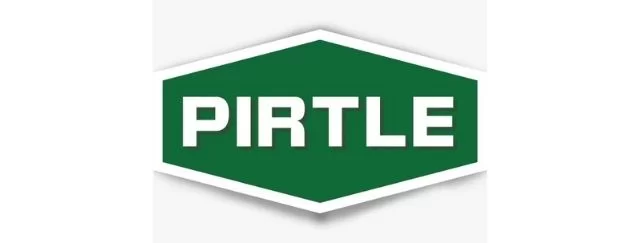

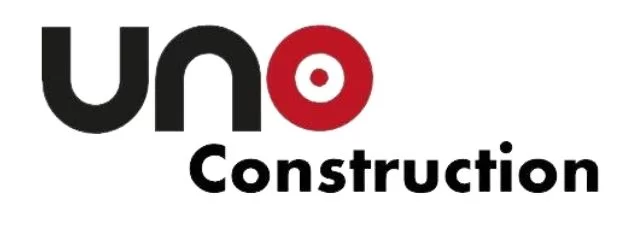





What Our Clients Say?
We take pride in delivering accurate, timely, and reliable estimates that help contractors and builders win more projects. Our clients consistently praise our attention to detail, fast turnaround times, and the positive impact our estimates have on their businesses.
Estimate Florida Consulting has helped us win more bids with their fast and accurate estimates. We trust them for every project!







